We had a blast with No More Heroes 2: Desperate Struggle, and are still awaiting word from Grasshopper Manufacture regarding a soundtrack release. While the game was released months ago in North America, it still hasn’t been released in Japan, and we’ve been fortunate enough to get some of lead sound designer and composer Jun Fukuda and sound coordinator Nobuhiko Sagara’s time to talk about their work on the title.
We dig deep into the many artists that were recorded for the soundtrack, the influence of the game’s theme of revenge, the use of tracks from the No More Heroes Dark Side Remixes album, a No More Heroes 2 soundtrack release, and Fukuda’s and Sagara’s respective backgrounds that led them to their current roles at Grasshopper Manufacture. It’s a good time, so we hope you enjoy reading about what went into all the sound elements in No More Heroes 2!
Hit the jump for our lengthy interview with Jun Fukuda and Nobuhiko Sagara from Grasshopper Manufacture.
First off, can you tell us about your respective roles on the project and tell us who else contributed to the game’s music and sound? We believe Takada-san, who handled the majority of the first game, had left the company before you started working on NMH2. Did he contribute any music?
Fukuda: First of all, I would like to thank you for the opportunity. I am very much honored.
I was in charge of the overall sound data development as well as the sound quality assurance. That includes organizing the data, creating sound effects and music, and putting sounds to the cut scenes. For doing the sound effects and sound implementation to the movies, a young member of the sound staff, Yusuke Komori, did a great job, too.
Sagara: My task was to read the scenario and figure out on what genres and types of music would be appropriate for the scenes. Then I picked the suitable musicians and commissioned them to write for the game.
Then I contacted the musicians to explain the game concept, the theme of the story, and characters. Also I was in charge of making the contract with them as well as attending the recording sessions.
Here is the list of the hired musicians:
THE RIOT -TEENS OF ANGER-
They were in charge of the opening and the ending songs. Kazutoshi Iida, a game creator, is the band’s vocalist.
Yoshioka Taku
He did the music for the battle with Nathan and etc. He was the arranger on the No.1 hit in 2009 in Japan!
Igarashi
He did the rap in Japanese on “Nathan is Our Boss,” the Nathan battle theme. He is a member of the hip hop group Fullmember in Tokyo. Their website is http://www.fullmember.jp.
CONVEX REBEL
His real name is Watanabe, from a band called CONVEX LEVEL, and he did the Charlie battle theme. He is using a fake name, REBEL, because he did this as an individual, not as the band. Their site is http://convexlevel.net.
NEUTRINO
This is the band that contributed the most number of pieces this time and they did the battle themes for Kimmy, New Destroy Man, and Jasper Batt Jr. as well as the map theme. Their music is on sale internationally on iTunes and Amazon. Their website is http://www.bridgenia.co.jp/neutrino/.
Missile Chewbuck (R)
This band did electronic remix of the 2nd Jasper Batt Jr. battle themes NEUTRINO made. The site is http://missilechewbacca.com/mc/index.html.
MACHINE HEAD
He did the battle music for Matt Helms, Ryuji, and Alice. We cannot reveal who he is, though.
HONDALADY
This indie techno band did the music for the Margaret battle and Captain Vladimir. Their official website is http://www.hondalady.net.
Keiichi Sugiyama
He did the music for Travis’s room and etc. He has composed for various games, and the most popular work by him is REZ.
I also wrote the lyrics for “Philistine,” the battle theme for Margaret. I am glad because I heard the fans like this song a lot. The translator for the lyrics is from the company that we always ask to translate. I took things from the character setting, the story theme, some Otaku vogue words, and so on, so I am sure translating those were quite difficult. However this translator did a great job on matching the translated lyrics to the melody and being really accurate to the original Japanese lyrics. The singer is Nadia Gifford. She sang the difficult melody perfectly.
For the Bizzare Jelly 5 song, we had 5 voice actors who are active in the Japanese Anime industry.
Takada san did not contribute any new music for NMH2. We used one piece by him, but that was initially composed for NMH1.
OSV: No More Heroes 2 is about revenge. How did this play into the game’s music direction? Were you going for a heavier sound this time around? Was it challenging to write music for a game with so many fight sequences?
Fukuda: The theme, revenge, had a big influence on the music. Compared to the previous one, overall we went for the heavier direction with more guitar. There are many continuous fight scenes, so to prevent the music from becoming too monotonous, we deliberately excluded music from certain stages.
We had many musicians participating for the project, so it was not too hard in terms of the quantity of the piece.
Sagara: Like Fukuda-san says, the heaviness was a must-have element for the game in order to depict the theme, revenge, of NMH2. Also we needed a not so elaborated, rough sound.
Yet we have totally different, not heavy pieces, too. The Kimmy stage has a refreshing pop piece, and the Charlie stage has a retro, science fiction soundtrack like sound.
The initial direction that Suda-san gave us was to make a soundtrack that had a wide variety of pieces so it is enjoyable. For the previous one, we developed around one musical motif. I think he wanted to try an opposite way from that.
OSV: The music in the No More Heroes Hotel was particularly gritty, like an old Western film. Tell us about this track, and why it’s so different from “Do Not Destroy” from the original No More Heroes.
Fukuda: “Revenge” is the keyword here, as I mentioned previously. Suda-san strongly requested us to create “a real heavy sound that depicts Travis’s vengeance,” so we have much darker pieces that are totally different from NMH1.
The music of NMH1 described an “everyday life” kind of a person, Travis, and that is opposite from the music of NMH2. For example, in my opinion, the motel music in NMH1 is “ordinary,” and in NMH2 it is “unordinary.”
Sagara: That piece was composed by Sugiyama-san, and I remember we did a number of retakes trying to get closer to Suda-san’s image.
OSV: A lot of the side missions are 8-bit mini-games in NMH2. I know you were also responsible for a lot of the 8-bit music from the original game. What is your connection with 8-bit music, and was the music you wrote for the game true to the limitations of the Famicom?
Fukuda: I came into the game industry in 2003, so I don’t have any work experience in the 8-bit era. However, as a player, I have absorbed it so much since I was little. For the 8-bit mini games of NMH2, I used the most easy-to-understand tones for expressing the retro atmosphere. It is supposed to be a fictional console, so it has similar limitations like the NES yet not exactly the same. Speaking of the sameness, there is the famous “blowing the cartridge” action when you go from Santa Destroy to the 8-bit mini games. The Japanese people who grew up in the NES era would know what it is, but I wonder if the foreigners would know what that is about.
OSV: Sound design was key in the original No More Heroes, from the amazing voice acting, to the amazing retro sound effects. What can you tell us about the direction for NMH2 from a sound design perspective? Is it difficult to make all these different elements work together?
Fukuda: Thank you so much. Indeed it is a game with so many different elements, but it was not too hard combining those because we also had all kinds of music too. Rather than combining the elements, I paid more attention to how I can fit the pitch and phrases of the sounds to the scenes and make them more distinctive.
OSV: Fukuda-san, what tools were you and the team using to create the game’s music? Was there certain sample libraries that you feel really gives No More Heroes its distinct sound?
Fukuda: My set up is quite simple, and I have a PC and DAW software, an audio interface, and a number of plugins. I also have a guitar, too. I do not have a particular sample library that I use to make sounds that are unique. This time I made more mini-game music and cutscene music that were not in the main game, so I used more samplers and software that I could make 8-bit sounds on. We did studio recording sessions for the music by the musicians. Sagara san can give some more details on that.
Sagara: Especially for the rock type of tunes, we tried not to do just a desktop recording and tried to record live bands as much as we could. It is kind of a pain in the neck because nowadays we all are used to doing the whole music making process with a single computer, but I thought we needed it for capturing the sound that has a raw, rough performance feel.
We booked a recording studio outside just to record the live drum performance, and for the electric guitars, we did not use amp simulators and used real amps and effectors. On the other hand, we have some pieces composed by using the Garageband, a bundled software for the Mac, and pieces that were recorded with some cheap gear at musicians’ bedrooms.
OSV: Would you like to tell us how you go about creating sounds and implementing them into the game? Do you have a Foley stage to create sounds? Are there any interesting ways that you used to create a specific sound for the game?
Fukuda: I begin with watching the actual game first. The places that I have to pay attention the most are where the sounds sync with the movements if the characters and objects all have their individual movements. Sometimes we create the materials from sample libraries and sometimes use synthesizers to make them. We do some tweaking even when we use stuff from existing libraries.
One unique thing I did was capture the gameplay movie and then put the sounds on it. The advantage of doing it in this way is that you can simulate the actual gameplay, so you can judge whether the sounds you created work or not in the early development stage.
We do not have a recording/foley studio, but I am hoping to have one in the company in the future.
OSV: We noticed that a lot of music in the game came from the Dark Side remix album that was released after the original No More Heroes came out. What went into the decision to include these tracks, and is there any chance we’ll see a follow-up remix album for No More Heroes 2?
Fukuda: You are right. Dark Side had a number of very high quality pieces and they matched well with the world of NMH2.
Sagara: We were told by Suda-san in the very beginning that he would like to have a lot of variety of music for NMH2. Since Dark Side had a lot of different kinds of remixes, we were already planning to use some of them for NMH2. But after all we only used 8 pieces from Dark Side for NMH2. We made over 100 pieces for NMH2, so it is not like we have more pieces from Dark Side. Personally I would love to make an NMH2 remix album.
OSV: What can you tell us about the disco track that plays in Ryan’s Gym? Who wrote this song?
Sagara: That was composed by Hagio-san who joined the Grasshopper sound team while the NMH2 was in development. He is not new to the industry at all and has a long career already. He was a co-worker of Suda-san when he was working at Human. Hagio-san was working at a different company for a while after Human, but we started working together again since last year.
I am assuming the reason why Hagio-san made that disco track was perhaps because he was inspired by Ryan’s gay-ish appearance.
OSV: How many minutes of music were created for No More Heroes 2: Desperate Struggle? Was there a lot of material that was written that didn’t get used?
Fukuda: I am not sure about the exact amount, but it is probably about 120 minutes of music. We don’t have as many unused ones.
Sagara: We have some unreleased tracks, but we used almost all the pieces that we made. I would have made more if we had more time.
OSV: We loved the 3-disc soundtrack that was released for the first No More Heroes game. Will we see a soundtrack release for the second game?
Fukuda: I am glad that you liked the soundtrack. Thank you so much. I hope we can release the soundtrack from NMH2, too.
Sagara: We would love to have the soundtrack out this time as well. However, unfortunately the game has not come out yet in Japan. I think if the soundtrack is to be released, it will be after the Japanese release. I am expecting that from Marvelous, the publisher of the game.
OSV: Suda-san is well known for his love of pro wrestling (puroresu), and in all his games there are always references to wrestling. Have wrestling entrance themes ever been a source of inspiration to you and Takada-san when writing music for No More Heroes?
Fukuda: I don’t think wrestling entrance themes have been a source of my inspiration so far.
OSV: Suda-san has noted that this will be the last time that No More Heroes is exclusive to the Wii. Will this make a difference to you and the rest of the team as you move forward with the series?
Fukuda: As the series go on, regardless of which console it is on, I think you have to think about “adding something” on what you have already established with the previous one in the series. It gets increasingly difficult to do so because there is a continuous demand for the higher quality. However it is a pleasure to create games that people enjoying playing, so this often gives better outcome for the members in the team.
Sagara: In every way, I think it will require us to increase the quality. I would like to do my best so I won’t be left behind in this generation.
OSV: Do each of you have a favorite character from the No More Heroes universe? Tell us why they’re your favorite.
Fukuda: My favorite is Shinobu. I like her outfit and color design. From the previous one, I like Bad Girl. I have a fond memory of the music, and her crazy personality is great.
Sagara: My favorite is Silvia. Same as Travis, I am one of those guys who gets fooled by bad girls.
OSV: If Travis Touchdown was to pick up an instrument to learn, which instrument do you think he’d pick? Would he be any good at it?
Sagara: It has to be the electric guitar. Travis loves anything that is cool and guys like. I can see him bidding on some vintage guitars on an internet auction site, but he definitely will suck at playing it.
Fukuda: Agreed (Laughs) Travis probably wouldn’t be able to even tune it.
OSV: The team at Grasshopper Manufacture is a very interesting group. Are there any interesting or funny stories that you have from the development of No More Heroes 2 that you’d like to share?
Sagara: So we could not decide whether to have THE RIOT, a game creator Kazutoshi Iida’s band, participate or not. They sing in Japanese and we were concerned if their sound would match the world of NMH2. Also we were concerned if the Western players would accept it. But the music for Bizzare Jelly 5 and the Nathan Copeland battle is in Japanese, and that sort of made us reconsider it. Therefore we decided to have THE RIOT for the important parts such as the opening and the ending. The result turned out great and they gave us fantastic pieces.
At the time Iida-san was not a GhM staff member and was developing a WiiWare game called “Discipline,” but he joined us officially after that. Now we make games together. I wonder if GhM has some kind of magnetic power to gather talented creators like him.
OSV: Fans in the United States unfortunately don’t know a lot about the two of you. Would you like to tell us about your musical backgrounds, how you got into games, and how you ended up at Grasshopper Manufacture?
Fukuda: When I was a student, I was in a choir as a soprano and in a brass band. At home I was often hearing Enka from a radio, so it might have influenced me somewhat. At the time I still wanted to be a Manga artist, though. I have always loved drawing since I was a kid, and I would draw manga and illustrations on my notes during classes. Sometimes I got yelled at from my teachers but kept doing it anyway.
I started the guitar late, around the time when I turned 20. I went to a school for it for one year or so, yet I am pretty much self taught. I think around that time I started writing music seriously if I remember correctly.
After that, I worked as an employee at a record shop, a supervisor for construction sights, a surveyor at a ruins excavation site, then a student for 2 years before I turned 30. I went through all those non-game related things and finally arrived GhM. My application included this strange thing, “a sound drama made with only sine waves,” and I guess that got their attention. By the way, I had never been in the game industry before GhM.
Sagara: When I was a student, I had wanted to work either at a record company or an editing division of a music magazine publisher. However, around the time of my graduation, the Japanese bubble economy collapsed, and I could not find a job at all. The IT industry and the game industry were the only ones that still had some energy, so I found a writer and editor job for a videogame magazine. I was actually in charge of the first game magazine interview that Suda-san did.
After that Suda-san founded GhM, and I started helping the company out. Including the planning and scenario writing, I was involved in all GhM projects in some ways.
While working for games, I still have continued the musical activities like playing in a band and DJing for events, and that led me to found my own indie record label 4 years ago. A lot of friends whom I have gotten to know while founding my company contributed music for NMH2. I was not just playing and having fun (Laughs).
OSV: Can you tell us at this time what the two of you will be working on next? Fukuda-san, are you looking forward to working with Yamaoka-san on future projects?
Fukuda: Of course I am looking forward to work with him. He’s got everything in terms of experience, knowledge, and network in the industry. For myself, I have already been working on a new project as a sound designer.
Sagara: Suda-san has so many ideas for stories and I think those cannot be contained within the game industry. In the future I will probably support him for his games as well as other things.
OSV: Any final words for fans of the No More Heroes series as they finish up No More Heroes 2 and look to the future of the series?
Fukuda: Thank you so much for playing the game. If you have not played the first one, please play it too. We are not even sure how the future of Travis is going to be. Let’s patiently wait for it with us!
Sagara: Thank you for playing NMH2. If you find some music that you enjoy in the game, please go and look up the musicians to see what other works they have done.
OSV: Thank you both for your time. We’re looking forward to more No More Heroes in the future!
[Special thanks to Naoko Mori at Grasshopper Manufacture for coordinating this interview, and to Shota Nakama and Chris Ling for translation]
始めに同作品でのお二方それぞれの役割について聞かせて下さい。他に誰が楽曲とサウンドを提供されたのか教えて頂けますか?1作目の音楽を殆ど手掛けた高田さんが、「ノーモアーヒーローズ2」プロジェクト始まった前に退社したと思われますが、楽曲を提供されましたか?
Fukuda: まずはありがとうございます、とても光栄です。
私の担当は、サウンドのクオリティコントロールを含めたデータ制作全般です。データの取りまとめ、効果音と楽曲の制作、各ムービーの音付けといった内容です。効果音と各ムービーの音付けでは、小森雄介という若いGhMサウンドスタッフも頑張ってくれました。
Sagara: 私の役割は、シナリオを読んで、その場面に、どんなジャンルの、どんな雰囲気の楽曲が必要なのか考え、それに相応しいミュージシャンを選び、作曲を依頼することでした。
実際にミュージシャンたちに連絡をとって、ゲームのコンセプトや、物語のテーマ、キャラクターなどの説明をしました。契約を結んだり、レコーディングに立ち会ったりもしました。
外注ミュージシャンは以下の通りです。
●THE RIOT -TEENS OF ANGER-(オープニングやエンディングの曲などを担当。ゲームクリエイターの飯田和敏さんがヴォーカルを担当しているバンドです)
●Yoshioka Taku (ネイサン戦のBGMなどを担当。なんと2009年の日本の年間チャートでNo.1になった曲のアレンジャーです)
●Igarashi(ネイサン戦のBGM「Nathan is our boss」で日本語のラップを担当。東京で活動しているヒップホップクルー“Fullmember”の一員です。http://www.fullmember.jp/ )
●CONVEX REBEL(チャーリー戦のBGMなどを担当したのは、CONVEX LEVELというバンドの渡辺さんです。今回はバンドでは個人で参加しているので、変名を使っています。http://convexlevel.net/ )
●NEUTRINO (キミー戦、ニューデストロイマン戦、ジャスパーバッドJr戦、マップ画面など、今回一番沢山の曲を提供したロックバンドです。インディーズで活動しています。世界各国のiTunes music store や amazon.comでMP3の販売もしています。 http://www.bridgenia.co.jp/neutrino/ )
●Missile Chewbuck(R) (NEUTRINOの作ったジャスパーバッドJr戦のBGM2曲をリミックスして、エレクトロ・チューンにしてくれました。http://missilechewbacca.com/mc/index.html)
●MACHINE HEAD (マット・ヘルムス戦、龍司戦、アリス戦のBGMを担当。誰なのかは秘密です。言えません)
●HONDALADY (マーガレット戦、ウラジミール戦などのBGMを担当。インディーズで活躍しているテクノバンドです。 http://www.hondalady.net/ )
●杉山圭一 (トラヴィスの部屋のBGMなどを担当しています。彼は様々なゲーム・ミュージックの仕事をしていますが、中でも有名なのは『REZ』です)
マーガレットとの戦闘中の曲「Philistine」では、私は作詞もしました。ファンの皆さんには、この曲の評判が良いようなので、嬉しいです。歌詞の翻訳を頼んだのが、いつもお世話になっている翻訳会社の方です。マーガレットのキャラクター設定や、物語のテーマ、オタク界の流行ワードなどを取り入れた歌詞なので、翻訳するのは難しかったと思うのですが、原詞の意味を的確に、かつメロディにぴったりと翻訳をしてくれて、助かりました。ヴォーカルはナディア・ギフォードさんです。難しいメロディをしっかりと歌いこなしてくれました。
ビザールジェリー5の曲は、実際に日本のアニメで活躍している声優さん5人に歌っていただきました。
高田さんは「NMH2」用に楽曲を提供していません。「NMH2」では、高田さんの楽曲が1曲使われていますが、それは元々前作のために作られた曲です。
OSV: ノーモアヒーローズ2は復讐がテーマです。これはどう音楽の方向性に影響を与えましたか? 今回はヘヴィな音を目指していたんでしょうか。 あれだけ多くの戦闘が続くゲームだと、音楽を書くのは難しかったですか?
Fukuda: “復讐”というテーマは大きな影響を与えました。 全体的に前作に比べギターサウンドが多くヘヴィな方向になっています。多くの戦闘が続くので、単調にならないように、敢えて楽曲を鳴らさないステージを設定したりもしました。
色々なミュージシャンに参加していただいたので、楽曲の数の多さという点では難しくはありませんでした
Sagara:おっしゃる通り「NMH2」の物語のテーマを表現するのに、ヘヴィな音は必要不可欠な要素でした。また、綺麗に整えられていない、荒々しい音が必要だと考えました。
でも、まったくヘヴィではない、違うタイプの曲もあります。キミー戦のBGMは爽やかなポップスですし、チャーリー戦のBGMは、レトロなSF映画のサントラ風です。
須田さんから最初にあった指示は、バラエティに富んだ楽曲が楽しめるサントラにしたいということでした。1つのモチーフを展開させていく前作の方法とは、逆のやり方を試したかったのです。
OSV: ホテル・ノーモアヒーローズの音楽は特に気骨のある曲、まるで昔の西部劇のように。この曲の詳細とノーモアヒーローズ1の「DND (Do Not Destroy)」との違いをもっと詳しく教えて頂けますか?
Fukuda:一つ前の質問にある“復讐”がキーワードです。須田さんからは「とにかくヘヴィに、トラヴィスの復讐心を音にしたような楽曲に」と強い要望がありました。そのため、前作からガラリと変わって陰鬱で重い楽曲になっています。
前作では、トラヴィスという人間の“日常”を音にしたような曲なので、全く逆になります。モーテルの曲は、NMH1では“日常”、NMH2では“非日常”だと私は思っています。
Sagara:この曲は、杉山さんが作曲しましたが、須田さんのイメージに近づくまで、何度かリテイクがありました。
OSV: ノーモアヒーローズ2の多くのサイドミッションは8ビットミニゲーム。福田さんは前作品の多くの8ビット音楽を作曲されたと知ります。8ビット音楽の関係や歴史はありますか?作曲しましたの楽曲はファミコンの制約に忠実ですか?
Fukuda:私がゲーム業界に入ったのは2003年なので、8bitゲーム時代の実務経験はありません。もちろん一人のプレイヤーとして、幼い頃からかなりどっぷり触れてはきました。
今回の8bitミニゲームは、オールドな雰囲気を表現する上で一番わかりやすい音色を使いました。架空のゲーム機という設定なので、ファミコンの制約に近いですが、忠実ではないです。
忠実といえば、サンタデストロイと8bitミニゲームを行き来する時に、“カートリッジタイプのゲームソフトの端子部分に息を吹きかけてホコリを取り除く”というマニアックな演出を音で表現しました。日本のファミコン世代なら、おそらく皆ピンとくると思うのですが海外の皆さんはどうなんでしょうか。
OSV: 素晴らしい声優の演技からレトロな効果音まで、サウンドデザインはノーモアヒーローズ1の重要なパートでした。 サウンドデザイン視点から見てNMH2について何か話せる事はありますか? ああいう多くの違った要素を一緒に組み合わせるのは困難だったでしょうか?
Fukuda:ありがとうございます。確かに様々な音が一同に会するゲームなのですが、楽曲にもあるようにバラエティに富んだ音を作るというのがあるので、組み合わせるのはそれほど困難ではありませんでした。
組み合わせよりも、音そのものの音程やフレーズなど、場面に合わせた上で如何に特徴的な音にするかという点に気を使いました。
OSV: 福田さんと作曲チームはどういった機材を使われてこのゲームの作曲をされましたか? ノーモアヒーローズの「音」はとてもユニークですが、特にその音を作る為には欠かせないサンプルライブラリー等はありましたか?
Fukuda:私個人の環境は至ってシンプルで、PCとDAWソフト、オーディオインターフェース、幾つかのソフトウェアプラグインです。あとは、ギターという楽器ですね。
ユニークな音を作る上で、欠かせない“ライブラリー”という決まったものは特にありません。私は、今作では各種ミニゲームやカットシーンなどのメインストーリー以外の楽曲を作ることが多かったので、8bit系の音が出せるものやサンプラーといったソフトウェアを使うことは多かったです。
参加いただいたミュージシャンの方々の楽曲ではスタジオ録音なども行いました。詳しくは相良さんお願いします。
Sagara:特にロック系の曲では、デスクトップ上で完結させず、実際のバンドの演奏をレコーディングするように努めました。デスクトップ上での音楽制作に慣れてしまった今では、面倒なことではありますが、荒々しい演奏の感触の残ったサウンドを得るには、それが必要だと思いました。
ドラムの生演奏をレコーディングするためだけに、社外のレコーディングスタジオを使ったり、エレキ・ギターのサウンドも、アンプ・シミュレーターだけでなく、本物のアンプとコンパクト・エフェクターを使って作りました。
一方で、macにバンドルされているgarage bandだけで作られた曲や、スタジオではなく、ミュージシャンのベッドルームで安価な機材のみでレコーディングされた曲もあります。
OSV: いつもどういう風に効果音を作成し、ゲームに落としていくのか教えて頂けますか? フォーリーを録音するスタジオをお持ちなんでしょうか? このゲームのサウンドエフェクトを創っていた時、何か特別にユニークな方法は使いましたか?
Fukuda:まずは実際にゲームが動いているのを見るところから始めます。キャラクターやインターフェースなど全ての動きのあるものは、いかに動きとシンクロするかというところに一番気を配るので。
素材そのものはサンプルライブラリーから作るものもありますし、シンセサイザーを駆使して音を作っていくこともやります。ライブラリから作る際にも何かしら手を加えるようにしています。
あと変わった方法としては、キャプチャしたゲームプレイムービーに音付けをするという方法で効果音を作る、という事をやりました。この方法だと実際にゲームに乗せた時のシミュレーションができるので、早い段階で音の良し悪しが判断が可能です。
録音スタジオは、今はまだありませんが今後は社内で持ちたいと考えています。
OSV: 今作の多くの楽曲は前作の発売後にリリースされたリミックスアルバム「No More Heroes Sound Tracks Dark Side」からだと気付きました。 そのアルバムからのトラックを使う事になった経緯は何ですか? ノーモアヒーローズ2のリミックスアルバムを作る可能性もあるんでしょうか?
Fukuda: そうですね。「Dark Side」には、非常にクオリティの高い楽曲が揃っていましたし、今作の世界観にも合うものも多かったです。
Sagara:「NMH2」には、バラエティに富んだ楽曲を、ふんだんに使いたい、ということを最初に須田さんに言われました。だから、様々なタイプのリミックスを収録した「Dark Side」の曲は、当初から「NMH2」に使う予定でした。
でも「Dark Side」から「NMH2」に使用されているのは8曲です。「NMH2」用に作った曲は100曲以上あるわけですから、そんなに「Dark Side」の曲が多いというわけでもないです。
「NMH2」のリミックスアルバムは、個人的にはとても作りたいと思っています。
OSV: Ryan’s Gym(ライアンの体育館ミニゲーム)にあるディスコトラックついて何か話していただけませんか?作曲家は誰ですか?
Sagara:「NMH2」開発中にGhMのサウンドチームに新加入した萩尾さんの曲です。といっても新人ではなく、キャリアは長いのです。須田さんがヒューマンで働いていた頃の同僚で、しばらく別の会社にいましたが、昨年から再び一緒に仕事をするようになりました。
萩尾さんが、ディスコ・トラックを作ったのは、ライアンのゲイっぽい外見を見て、ビビッとひらめいたからでしょう。
OSV: ノーモアヒーローズ2には何分の音楽が創られましたか? 未使用の作品もたくさんあったのでしょうか。
Fukuda: 正確な時間はわかりませんが、最終的に120分程のようです。未使用の曲はそれほどありません。
Sagara:何曲か未使用の曲もあります。でも作った曲のほとんどは、使われています。時間があればもっとたくさんの曲を作りたかったです。
OSV: 私達は以前リリースされたノーモアヒーローズ1の3枚組サントラが凄く好きでした。 2作目では同様のリリースを見る事はあるんでしょうか?
Fukuda:前作のサウンドトラック、気に入っていただけて嬉しいです。ありがとうございます。今作もサウンドトラックを発売できると良いなと思っています。
Sagara:私たちも、サントラを発売してほしいと思っています。でも日本ではまだゲームも発売されていないんです。サントラが発売されるとしたら、日本でゲームが発売された後になると思います。発売元のマーベラスに期待しています。
OSV: 須田さんはプロレス愛好家として有名で、彼のゲームでは常にプロレスに関する事が引用されています。 福田さんと高田さんはノーモアヒーローズの作曲をするにあたって、プロレスの入場曲がインスピレーションの源となった事等はありましたか?
Fukuda: プロレスの入場曲が直接インスピレーションの源になったことは無いですね。
OSV: 須田さんは今回がノーモアヒーローズ最後のWii独占販売だとおっしゃられています。シリーズが進むにつれて、この事は福田さん、相良さん、そして残りのチームに対してどういった影響を与えると思いますか?
Fukuda:シリーズを重ねていくと、ハードが何であるかには関係なく、前作の土台に“プラスしていく何か”を考えなければならないと思います。高いクオリティも引き続き求められるので、どんどん大変になっていくとは思いますが、遊んで頂く皆さんに楽しんでいただける作品を作る事ができるのはとても幸せな事なので、チームの皆にとってはプラスに働く面も多いと思います。
Sagara:あらゆる面で、よりクオリティの高い仕事を求められるようになると思います。時代に取り残されないように頑張りたいと思います。
OSV: お二方はノーモアヒーローズの世界で特に気に入っているキャラはいますか? もしいるなら理由を聞かせて下さい。
Fukuda:シノブが気に入っています。シノブは衣装とキャラの配色が好きです。あとは前作のキャラですがバッドガールが好きです。楽曲にも思い入れがありますし、バッドガールの、脳がプッツリいってしまった性格が良いですね。
Sagara:シルヴィアが気に入っています。私は悪い女に翻弄されるタイプなんです。トラヴィスと同じです。
OSV: もしトラヴィス・タッチダウンが楽器を学ぶなら、どの楽器を選ぶと思いますか? そしてその楽器が巧くなると思いますか?
Sagara: やっぱりエレクトリック・ギターだと思います。トラヴィスは男の子が憧れる、カッコイイものは何でも好きですから。ネットオークションでヴィンテージ品を落札してそうです。でも絶対に下手くそだと思います。
Fukuda: そうですね(笑)チューニングとかも上手くできない感じで。
OSV: グラスホッパーのチームは非常に興味深いグループだと思います。 ノーモアヒーローズ2の開発中に起こった面白い逸話等、何か話して頂ける事はありますか?
Sagara: 最初はゲーム作家・飯田和敏さんのバンド、THE RIOTに参加してもらうかどうか、迷っていました。彼らは日本語で歌うこともあり、NMH2の世界観に合うかどうか疑問だったのです。欧米のユーザーにそれが受け入れられるかどうかも心配でした。
でもビザール・ジェリー・5やネイサン戦のBGMの歌詞は日本語だし、それなら他にも日本語の歌があってもいいかな、と考えなおしました。そんなわけでオープニングやエンディングなど重要な部分をTHE RIOTに託すことにしました。結果的にTHE RIOTは素晴らしい楽曲を提供してくれました。
当時はまだ、飯田さんはGhMのスタッフではなく、Wii Ware用の「ディシプリン」というゲームを作っている頃でした。ですが、その後、正式にGhMに参加し、今では一緒にゲームを作っています。
GhMには、そうやって、どんどん才能のあるクリエイターが自然と集まってくる磁場のような力があるのかなあ、と思います。
OSV: 残念な事にアメリカのファンはお二方の事をあまり良く知りませんので、音楽のバックグラウンド、どうやってゲーム業界に入ったのか、そしてグラスホッパーで働く様になったきっかけを教えて下さい。
Fukuda:学生時代は、合唱部ソプラノ、ブラスバンドに在籍していました。家では演歌がラジオからよく流れていたので、それの影響も多少なりとも受けているかもしれません。しかし、この頃はまだ「将来は漫画家になろう」と思っていました。幼い頃から絵を描くのが大好きで、授業中もノートは漫画やイラストで埋め尽くしていました。先生に叱られながらも描き続けてました。
ギターを始めたのは遅く、20歳を過ぎたあたりです。スクールに通った時期も1年ほどありましたが、殆どは独学でやってきました。この頃から本格的に作曲というものを始めたと記憶しています。
その後は、レコード販売店の店員や土木建築業界での現場監督、遺跡発掘調査での測量仕事、30歳を前に再び学生を2年間、というゲームとは関係なさそうな時期を経て、ようやくGhMに入社しました。応募作品の中に“サイン波だけでサウンドドラマを作る”という少し変わったものも入れてあり、そのあたりに興味を持ってもらえたようです。ちなみに、ゲーム業界はGhMが初めてです。
Sagara:私は学生の頃、将来はレコード会社か音楽雑誌の編集部で働きたいと願っていました。しかし私が学校を卒業した時期、日本はバブル経済が崩壊した直後で、就職先がまったく無かったのです。でもIT業界とビデオゲーム業界だけは、まだ活力がありました。私はビデオゲーム雑誌のライターとエディターの仕事を見つけました。須田さんが初めて受けたゲーム雑誌のインタビューは、私が担当した記事でした。
その後、須田さんはGhMを設立し、私はGhMの仕事を手伝うようになりました。企画やシナリオなど、GhMの全ての作品において、何らかのカタチで関わっています。
ゲームの仕事をしつつも、バンドやDJイベントなどの音楽活動は続けていて、4年前には自分でインディーズ・レーベルを設立しました。この音楽活動を通じて知り合った仲間の多くが「NMH2」のために楽曲を提供してくれています。ただ遊んでいたわけではないのです。
OSV: お二方が次は何に取り組むのか話して頂けますか? 福田さん、山岡さんと将来のプロジェクトで一緒に働くのは楽しみですか?
Fukuda:山岡さんは、経験・知識・人脈などどれをとっても素晴らしい方だと感じています。もちろんとても楽しみです。
現在の私は、既に新しいプロジェクトにサウンドデザイナーとして取り組んでいます。
Sagara:須田さんは、たくさんのストーリーのアイデアを持っていて、ゲームだけでは、すべてのアイデアを発表できなくなっています。私は須田さんのゲーム以外の仕事のサポートをすることが多くなるでしょう。
OSV: NMH2をそろそろクリアとシリーズの将来を楽しみに待つファンに、最後に何かメッセージはありますか?
Fukuda: プレイして頂きありがとうございます。 前作を未経験の方がいたら、そちらもぜひプレイしてみてください。今後トラヴィスがどうなっていくのかは、現時点では私にも全く未知です。皆さん、一緒にわくわくしながら待ちましょう!
Sagara: 「NMH2」を遊んでくれてありがとうございます。「NMH2」のなかで、気にいったBGMがあったら、その曲を演奏しているミュージシャンの別の作品も探して聞いてみてください。
OSV: お時間ありがとうございました。ノーモアヒーローズの次回作を楽しみにしています!






























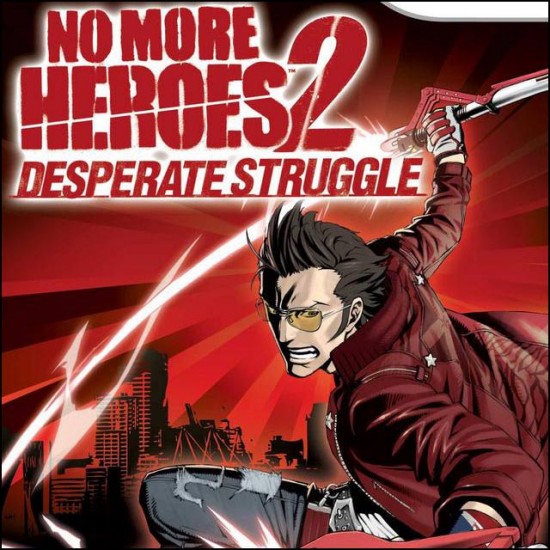
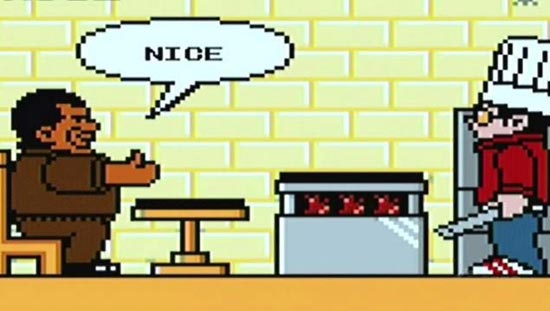
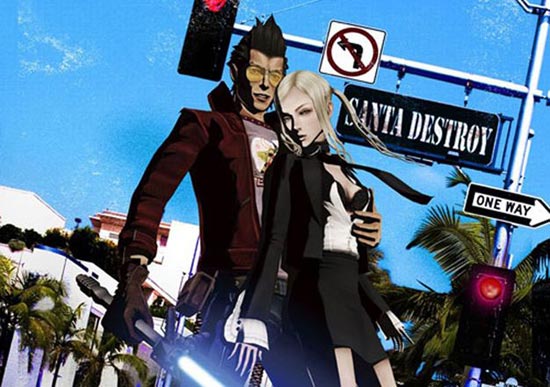
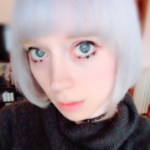

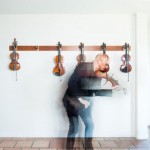
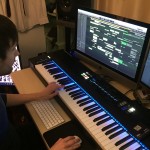







No questions about Akira Yamaoka?
They said they wanted to keep it a secret.
[…] This post was mentioned on Twitter by Kiyoshi Yoshida and junt74, 長嶺 進一郎. 長嶺 進一郎 said: RT @kiyosick: NMH2 のサウンド方面インタビュー。日本語でも読める!勿論俺様達 The Riot や HONDALADY についても語られている。個人的にナイスだったのは Fullmember のイガラシ君と BGM 的に共演出来ちゃった事! http://bit.ly/d5QYJn […]
[…] Original Sound Version » Blog Archive » No More Heroes 2 In…ね。 sagara:シルヴィアが気に入っています。私は悪い女に翻弄されるタイプなんです。トラヴィスと同じです。 osv: もしトラヴィスタッチダウンが楽器を学ぶなら、どの楽器を選ぶと思いますか? そしてその楽器が巧くなると思いますか? sagara: やっぱり…はてなブックマークより […]
[…] Original Sound Version » Blog Archive » No More Heroes 2 In…backgrounds that led them to their current roles at grasshopper manufacture. it’s a good time, so we hope you enjoy reading about…はてなブックマークより […]